




Practical Methods to Draw Perpendicular Lines in Geometry
What do you understand by the term perpendicular? The term perpendicular can be defined as a straight line that makes a 900 angle with another line. 900 angle is also a right angle. In other words, we can say that when two lines meet each other to form a right angle, then such lines are referred to as perpendicular. A line is said to be perpendicular to a plane only if it is perpendicular to every intersecting line. Here in this lesson, we will learn about perpendicular lines, the construction of perpendicular lines by using a protractor and much more.
Perpendicular Lines
Perpendicular lines are defined as the two distinct lines that meet or intersect each other at 900 or a right angle.
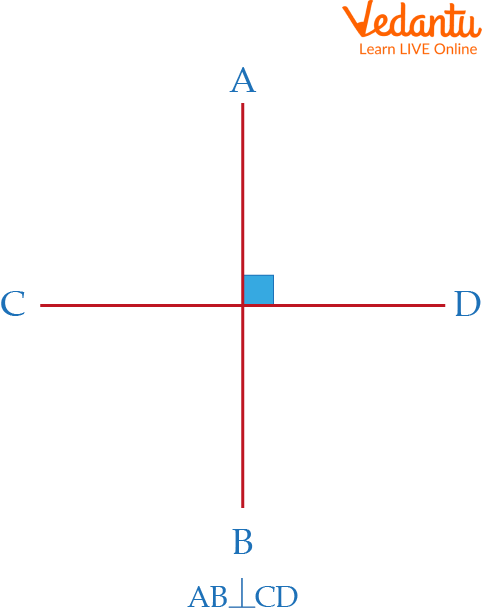
Perpendicular Lines
CD is perpendicular to AB because CD and AB intersect each other at 900.
Properties of Perpendicular Lines
Earlier in this lesson, we have already seen what a Perpendicular Line looks like. If an ‘L’ shape is formed in the figure, then the corresponding angle at the peak forms a right angle. Therefore, perpendicular lines always intersect, but all intersecting lines are not always perpendicular to each other. There are a few properties of perpendicular lines:
Perpendicular lines always intersect or meet each other.
If two lines are perpendicular to the same line, then the lines are parallel to each other, and they will never meet or intersect each other.
The angle between two perpendicular lines is 900.
How to Draw a Perpendicular Line?
A Perpendicular line can be drawn by using a protractor as well as a compass. So firstly, we are going to look at the construction of perpendicular lines by using a protractor and then we will learn how to draw a perpendicular line with the help of the compass.
In mathematics concerning geometry, the protractor is an important tool to measure and construct. To draw a perpendicular line, follow the given steps of construction:
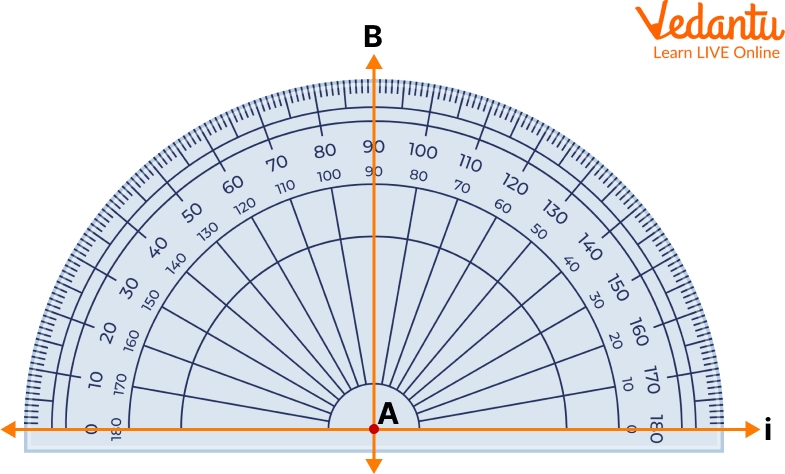
A Protractor Showing How To Draw A Perpendicular Line
Step 1: First, draw a horizontal line on any sheet of paper.
Step 2: Mark a point A on it which will be the meeting or intersecting point.
Step 3: Place the protractor in the centre of the line named A and align it with the horizontal line made earlier.
Step 4: On the protractor, mark a point at 900.
Step 5: Remove the protractor from the line and join both points A and B.
So, we obtain AB perpendicular to l.
We can construct a perpendicular line by using the compass. There are some steps of construction which need to be followed while drawing the perpendicular line.
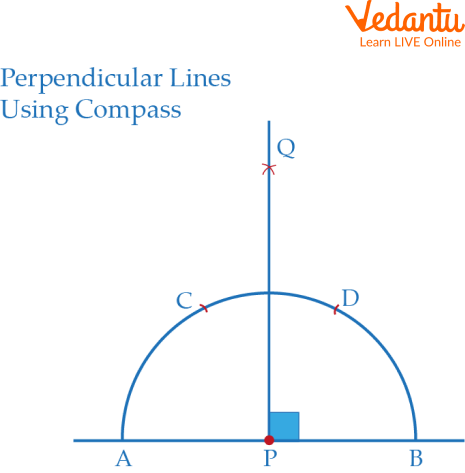
Perpendicular Lines Using Compass
Step 1: Place the tip of the compass on a point named P, then take an appropriate radius and draw a semi-circle that cuts the lines A and B.
Step 2: In the second step, stretch the compass widely and place the compass tip above the line at the new point Q. There will be an intersection between the two new arcs made.
Step 3: With the help of a ruler, join the two points P and Q, where both the arcs intersect.
So, we obtain PQ perpendicular to AB.
Difference Between Perpendicular Lines and Parallel Lines
Solved Examples
Q 1. State whether the given diagrams are of perpendicular lines or parallel lines.
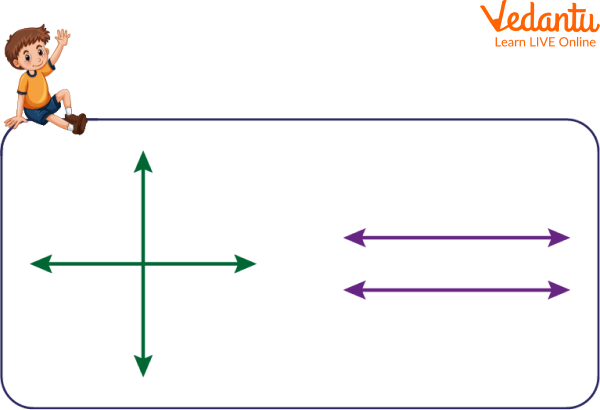
Perpendicular and Parallel Lines
Ans. The lines given in green colour represent the perpendicular lines because they are intersecting at the right angle i.e. 900 and the lines given in violet colour represent the parallel lines because they never meet each other at any angle.
Q2. Is this a perpendicular line?
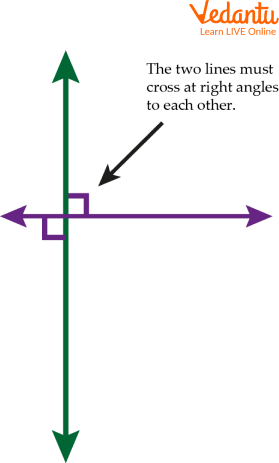
Perpendicular Lines
Ans. These lines represent a pair of perpendicular line because here, the lines meet or intersect at right angles, i.e. 900.
Practice Questions
Q 1. Which of the following objects can be described as perpendicular lines?
Apple, Designs in Windows, Television, Banana, and Railway Track Crossing
Ans. Designs in Windows, Television, and Railway Track Crossing.
Q2. Identify the following diagram.
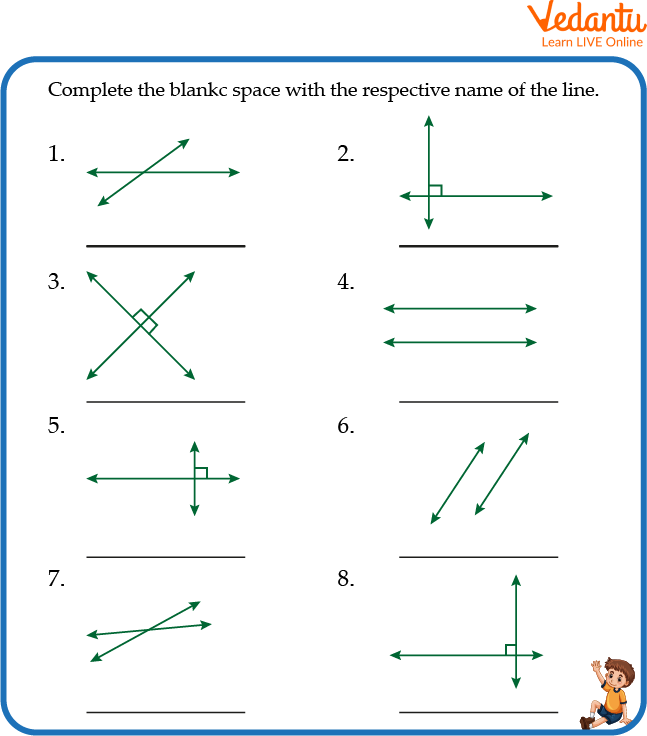
Practice Question
Ans. 2, 3, 5, and 8 represent perpendicular lines.
Summary
If we take a moment to notice our surroundings then we will realize that the lines are everywhere. Thus, it is necessary to know the lines. Mathematically, a line can be defined as a path which is straight having no ends. Some of the times when lines intersect or meet each other at a right angle at a given point then such lines are called perpendicular lines. The above article has explained the perpendicular lines deeply by using creative images.
FAQs on How to Construct Perpendicular Lines: Step-by-Step Guide
1. Are the diagonals of a rhombus perpendicular to each other?
Yes, the diagonals of a rhombus are perpendicular to each other because they meet or intersect at an angle of 900.
2. What is a curve line?
A curve line is defined as a line which is not straight but rather curved. In simple words, it can be illustrated as a bent line.
3. How many perpendicular lines can be drawn to a given line?
There can be drawn in an infinite number provided that it is drawn at a right angle.























